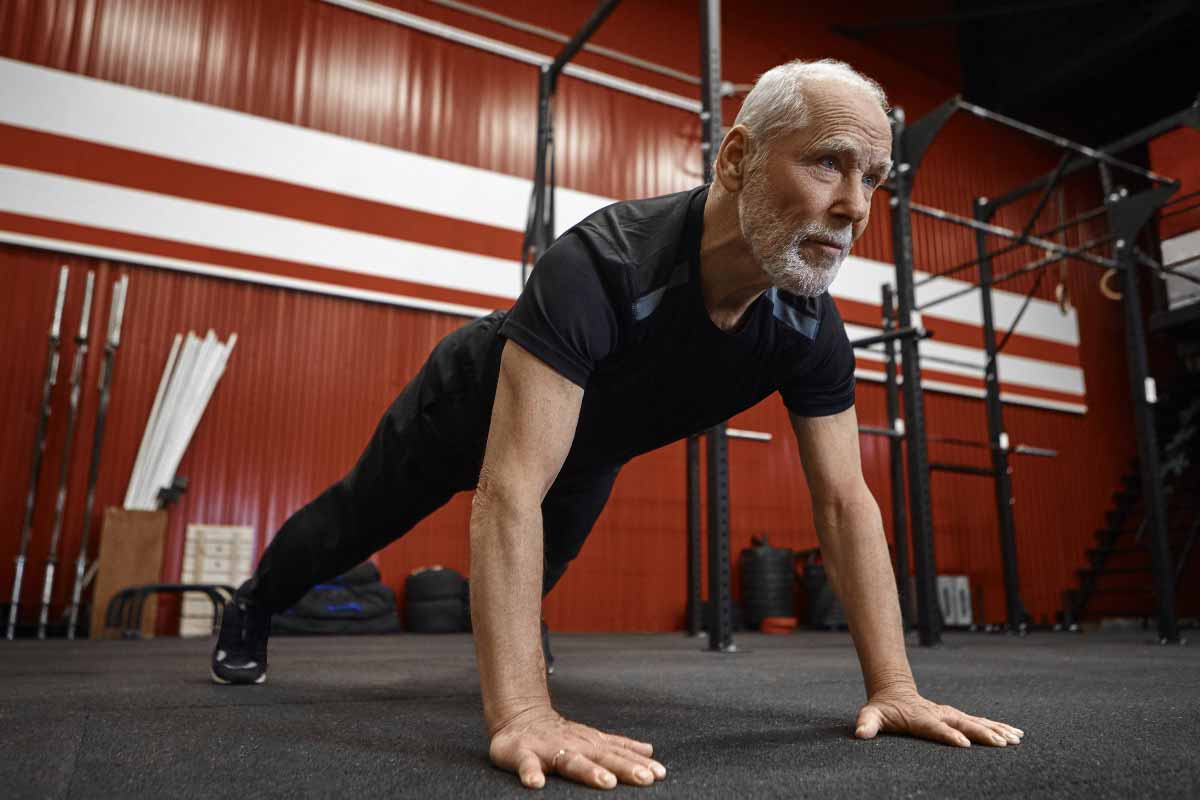A strength and mobility workout isn’t a trend; it’s a promise you can keep at any age. It lives in the spaces you already have—your living room, a quiet park, a hotel room. No hard sell, no shiny gadgets you’ll forget. Just choices that add up, day by day, to a body that says yes.
The story that reframes what “old” looks like
Nate Wilkins doesn’t chase youth; he builds it, rep by rep. At seventy-one, he coaches, travels, and co-created the AgelessWorkout Method with calm conviction. He talks about purpose like it’s fuel and community like it’s coaching you from the sidelines. Pain isn’t the villain anymore; it’s a teacher that asks for better form and smarter rest. His message lands because it’s lived, not posted for likes. This is where a strength and mobility workout stops being theory and becomes a way of living. For anyone easing back into movement, think of it as a senior fitness routine with swagger, not limits.
- He favors practical moves that carry into real life.
- He keeps sessions adaptable, short when needed, longer when it serves recovery.
- He aims for confidence first, performance next, longevity always.
- He trains grip strength because it mirrors everyday independence.
The simple circuit that travels with you
Nate’s go-to routine fits into tight mornings and busy weeks. It needs bodyweight, curiosity, and a little patience with yourself. Add bands or dumbbells when you’re ready, not when guilt starts talking. Treat this as your portable strength and mobility workout, built to flex with your day. It doubles as a welcoming senior fitness routine, friendly to beginners and respectful of seasoned bodies.
Warm up your edges
- March in place or lift high knees, breathing easy.
- Roll your shoulders until tension softens.
Move through the circuit
- 10–15 bodyweight squats to wake your legs and hips.
- 10–15 wall push-ups for chest, arms, and a steady core.
- 10–15 hip hinges to protect your back and feed your glutes.
- 30 seconds of standing knee lifts to tune balance and posture.
- 8–10 step-backs or gentle lunges to build stability that actually shows up.
Cool the system
- Hold simple stretches.
- Breathe like you mean it.
- One round on rushed days still counts.
- Up to three rounds with bands when energy smiles back.
- Fifteen to twenty minutes, door to door, is plenty.
- Progress happens quietly and then shows up loudly.
The bigger picture: how he trains beyond the basics
Nate rises early because mornings give him room to focus. He opens with foam rolling and long, thoughtful stretches. That quiet preparation isn’t fancy; it’s respect for a working body. Resistance work forms the backbone: carries, rows, presses, and push-ups in clean lines. He adds bands and bars, chasing quality reps and a grip that refuses to fade. These choices stitch together another strength and mobility workout, steady and honest.
Strength work that supports real life
- Squat to overhead press for full-body power in one smooth pattern.
- Bent-over rows, with dumbbells or a bar, for back strength you feel when you stand tall.
- Farmer’s Carries that make groceries feel lighter and doors easier to hold.
- Push-ups—inclined or full—because simple never stopped being effective.
Function and flow
- Bodyweight drills for coordination that lasts beyond the gym.
- Resistance bands that travel well and meet you where you are.
- Balance practice that future-proofs stairs, curbs, and crowded sidewalks.
Mobility, always
- Long, stretchy lines inspired by Pilates and gentle yoga.
- Hips that open, shoulders that glide, a spine that enjoys the day.
Other flavors he rotates
- Strength circuits for variety and spark.
- Glute-focused sessions that protect the back.
- Pull days that straighten your posture.
- Water workouts that are kind to joints and tough on excuses.
Call it discipline if you want. He calls it showing up for the person he plans to be. This is how a strength and mobility workout becomes a lifestyle instead of a phase. It’s also how a senior fitness routine stays interesting enough to last.
Your turn: start small, own the pace
New to training later in life? You’re not late—you’re right on time. Begin with a quick health check so your plan matches your body. Ten gentle minutes beats an hour you’ll avoid all week. Walk, stretch in a chair, breathe with intention, and stack wins. Layer in light weights or bands twice a week when the basics feel friendly. Add balance drills so stairs stop feeling like a test. Invite a friend, a walking club, or a small class for momentum you can borrow. Clarity gets brighter when you move; mood does too.
Build your personal playbook
- Aerobic: walking, swimming, or a brisk bike ride.
- Strength: bands, light dumbbells, or clean bodyweight patterns.
- Flexibility: slow stretches that whisper to tight spaces.
- Balance: single-leg stands near a wall, heel-to-toe walks down the hallway.
Every step counts, even the tiny ones that look ordinary. Your body remembers that you showed up. Tomorrow gets easier because today wasn’t a fight. Anchor it all with one more strength and mobility workout, sized to your energy and schedule. That’s the nudge that carries into five years, then ten, then twenty more. Keep the flame small and steady. Let consistency write the story you want to live.
Nate’s example isn’t about perfection. It’s about purpose, kindness to your joints, and the stubborn joy of progress. Start where you are, move with care, and keep the promises you make to yourself. The mirror will notice. So will the life waiting outside your door.
